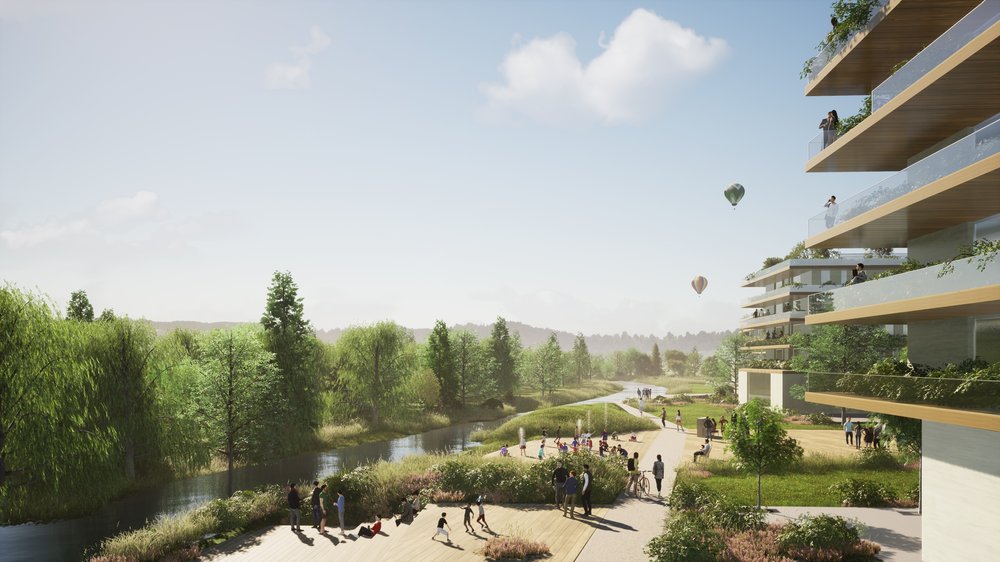



Why Take Part in Design Competitions?
Design competitions are not just simple contests. They are moments in which architecture rediscovers its most authentic dimension: a laboratory of ideas, dialogue, and creative freedom. Taking part in a competition means opening oneself to complex, collective themes that go beyond the daily routine of the office, prompting architects to rethink their role as interpreters of community needs.As Alvar Aalto reminded us: “Architecture is an emotional experience. It is made for people. To be lived, not just observed.”In this sense, a competition becomes an experience that engages mind, matter, and society throughout the entire time we imagine and write the project.But how does it actually work? And why is it so important for us architects to participate?
Participating in a design competition means, first of all, going back to studying. It’s a rare opportunity that pulls the architect out of everyday habits and exposes them to themes that seldom emerge in ordinary practice: schools, public squares, churches, complex urban spaces. To address these topics, one must do research, read, stay updated, and engage with specialists from other fields. It’s a bit like returning to university, with the freedom and lightness of experimenting without filters.
It is also a personal challenge. Unlike a private commission, here we are our own client: no one tells us “yes” or “no.” Every decision is the responsibility of the designer and their team. This requires rigor, sometimes uncertainty, but also enjoyment: brainstorming for a competition is one of the moments in which architecture regains its most free and creative dimension.Finally, a competition forces us to step out of the studio. While a residential project often requires only dialogue with the client, a competition demands immersion in the world: visiting the site, speaking with pedagogists, liturgists, landscape designers, sociologists. This was the case for the Niccolò Pisano School in Marina di Pisa, where we worked closely with teachers and pedagogical experts to interpret the meaning of a future-oriented school one capable of engaging the community and the surrounding natural environment, open in every sense and deeply connected to its territory.
A competition is a true laboratory and, like any respectable experiment, several steps must be followed to hope for a successful outcome. It begins at stage zero, the selection of the brief, followed by the analysis and reading of the materials provided by the competition organizers.Then comes the real study phase: a personal investigation of the context that leads to identifying a guiding idea.
For the N. Pisano School, that idea emerged clearly: “A treehouse school overlooking the sea.” A vision born from a unique setting between pine forest and sea horizon which guided the entire design process.From there, the work developed through successive phases: team discussions, project writing, and visual translation of the concept through renderings, 3D models, and a clear, communicative narrative.This is followed by the wait for the first selection, the possible transition to the final stage, and then further in-depth studies with new surveys and analyses (often involving experts connected to the field of intervention), until the final submission.Crucially, a competition gains meaning not only through victory. Each step carries professional growth: the competition becomes not just a chance to win, but a way to enrich the architect’s toolkit, refine their perspective, and bring new insights back into the practice.
What matters most? More than in other types of work, here the central idea is the true protagonist. It must be clear, strong, capable of convincing a jury of expert architects and speaking to an entire community. The task is not merely to propose a functional solution, but to imagine a possible future.
In the Marina di Pisa school project, the concept translated into spaces that breathe with the surrounding nature: a “didactic undergrowth” on the ground floor, where the pine forest enters the school, and a tower rising through the treetops to look out toward the sea. Architectural symbols embodying pedagogical values: connection with nature, sociability, creativity, openness to the territory.
Of course, the value of an idea lies not only in its evocative power but also in its ability to become concrete architecture flexible, functional, and real.
The first rule: clarity and effectiveness. Since the project cannot be explained verbally, everything must emerge from the submitted documents. This is why graphic and written choices are crucial. Words must communicate clearly and professionally; images must attract and convince. Renderings, diagrams, drawings, and written statements are the tools through which the idea becomes tangible and visual in the minds of the jury.
For the Niccolò Pisano School, the writing had to communicate not only the technical choices but also the educational and social vision behind the project: an open, inclusive school, connected to the neighborhood and conceived as an integral part of the community.
A competition does not end when the winner is announced. And not only because work may continue afterward but because, regardless of the outcome, those who participate emerge enriched. Every experience brings new awareness back to the office, along with tools and references that also inform private projects, helping us renew our perspectives and deepen our knowledge.
And there is more: a competition leaves a trace of values. Designing for a community means feeling part of a positive transformation, contributing to the quality of life of those who will inhabit those spaces. As Renzo Piano said: “Building is a collective responsibility.”In competitions, this responsibility becomes even more evident, because the client is the community itself. For this reason, despite the challenges and the self-criticism that accompanies every stage, these works remain among the most intense and formative experiences for anyone working daily in architecture.
